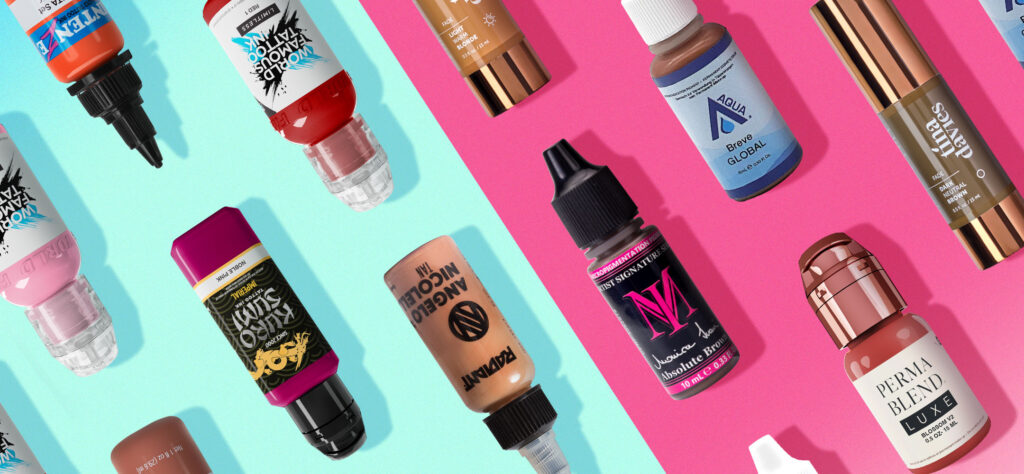Can you use regular tattoo ink for permanent makeup?
Although a lot of permanent makeup supplies have huge similarities to tattoo supplies, there’s one area where the difference is significant - that’s in tattoo ink vs PMU pigments.
While permanent makeup pigments and tattoo inks are the same thing on paper, in practice they are very different. And for the avoidance of all doubt - tattoo inks should not be used for PMU.
Here are the three main differences between these two products, and why it’s important to use the right one!
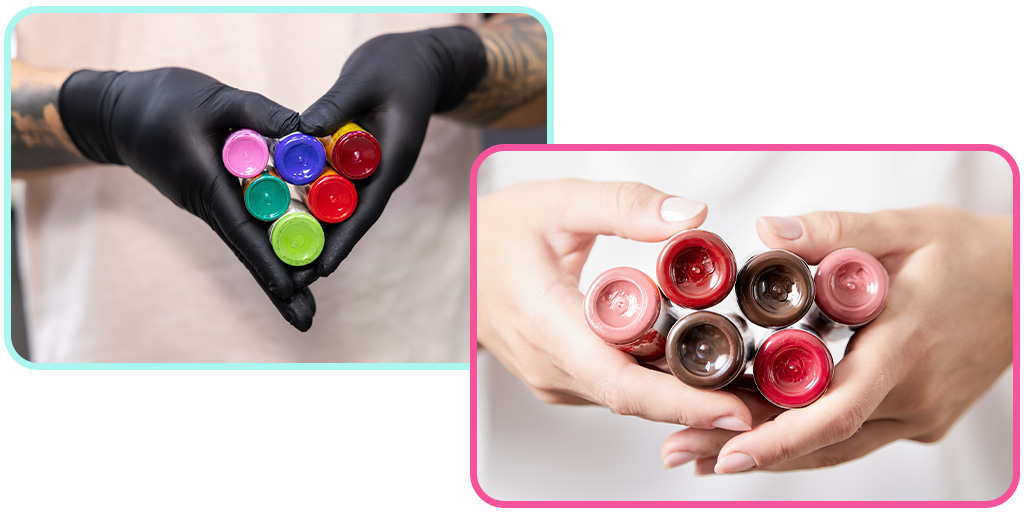
Ingredients
Both tattoo ink and PMU pigments operate on the same principles: they’re made up of a solid pigment (powdered colourant), and a carrier fluid or agents into which the pigment is dispersed.
But the makeup of those pigments is where the difference lies. PMU pigments have been specifically designed for cosmetic tattooing and for use on the face, particularly because the skin around areas like the eyebrow and lips are so much more fragile than other places on the body.
Facial skin is much thinner and more fragile than most other parts of the body, including particularly difficult areas such as the lips and eyelids, so the ingredients have to account for these differences.
Many PMU pigments are based on iron oxide, which is a safe and stable colour agent. Iron oxide is an inorganic pigment, which means it heals softer and fades more quickly than organic compounds, which are perfect for tattoos thanks to their long-lasting vibrancy.
There are even inorganic pigment sets designed specifically to fade! The Monica Ivani Signature Series from Li Pigments fades slowly and gently for incredibly natural results, while the Tina Davies FADE Set fades gently over the next 12-24 months, allowing clients to try out new looks and colours without a lifelong commitment!
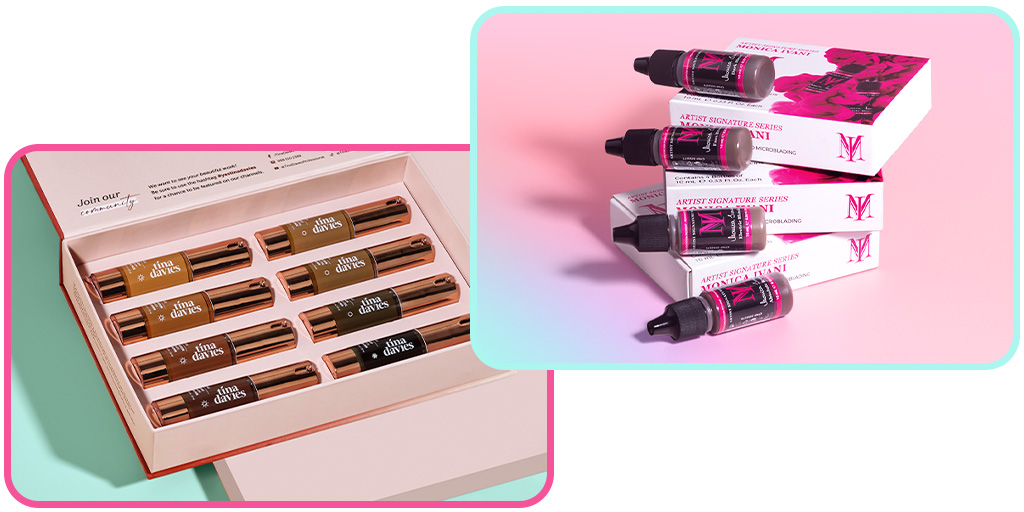
In comparison, tattoo ink often includes a high percentage titanium dioxide which is brighter, more opaque, and more difficult to remove - especially when it comes to the delicate skin around the lips. Titanium Dioxide is what creates the opacity within tattoo inks and PMU pigments – body ink has a much higher percentage of TD for vivid, bright healed results. The concentration of TD is much lower in pigment to create subtle washes of colour, that replicate the appearance of natural cosmetic makeup.
The Embody and Enhance sets from Sculpted Studios use minimal titanium dioxide in their formulations to ensure great healed results and minimal damage to the lip tissue - we’d highly recommend using these rather than tattoo ink! TD is unavoidable in PMU pigments as without it, pigments would heal too sheer – however, opting for a lower TD pigment like the Sculpted Studios sets ensures natural, healed results long-term – without pigment fading down to a chalky, grey shade within the lips.
Concentration and Formulation
Going back to those pigment particles, another major difference is the concentration of pigment within the carrier fluid. Tattoo inks tend to be very highly concentrated with the long-lasting colourants so that colours are bolder, brighter and sharper - after all, with tattoos you’re not going for a “natural” look.
PMU pigments often have smaller sized particles that heal softer and more naturally, which is how we can create such amazing effects with hair strokes or lip pixels. While tattoos can fade over time, permanent makeup fades a lot faster and is a lot easier to remove.
To get that natural look, you’ll have to have a good understanding of colour theory as well as the science of pigments to know how the hue of your pigment will interact with the tones and undertones of your client’s skin. Successful PMU is a lot more technically difficult than merely picking a favourite colour!
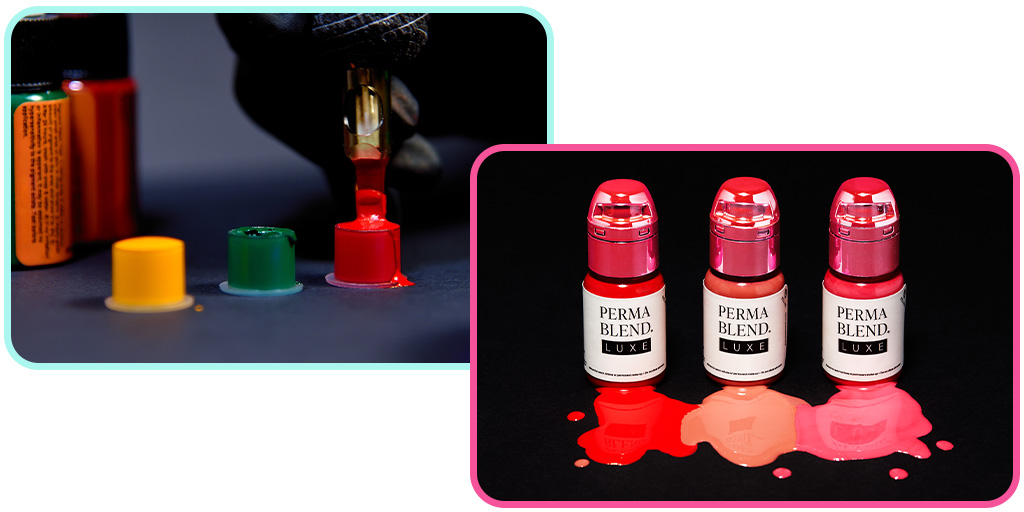
Technique
Tattoo inks and PMU pigments are applied differently, which also contributes to their varied uses.
Permanent makeup artists will usually implant their pigment using a rotary machine with thin needles, or a microblading tool and blade. These machines typically run at a lower voltage for gentler application on the delicate facial skin.
In comparison, tattoos may be done with rotary or coil tattoo machines, which tend to hit a lot harder, and often use larger needle configurations!
Altogether, the sensitivity and fragility of facial skin as well as the desired healing results mean that you absolutely shouldn’t use tattoo ink for PMU! Dedicated permanent makeup pigments are safer to use, with a stronger basis in how colour theory is affected by skin tones and undertones and are the best way to create natural-looking results for your clients.
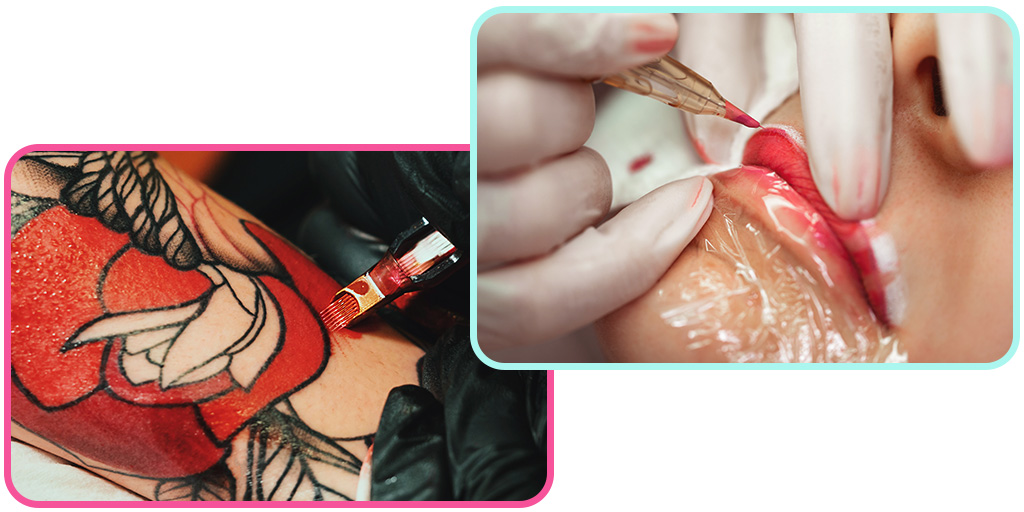
What will happen if I use tattoo ink for PMU?
What tools an artist chooses to use is at their own discretion, but as a trusted supplier we want to ensure that we are fully educating our customers on what pigments and inks are made up – meaning that artists can fully understand what they are using on their clients and how this will heal and fade over a long period of time.
As mentioned previously, tattoo inks tend to contain a high concentration of very long lasting colourants such as titanium dioxide or carbon. Although these ingredients create vivid healed results with high opacity, it is the long-term effects that are concerning. The other colourants within the ink will gently fade over time whereas the white (TD) will remain in the lips – which will likely fade to a a chalky or discoloured effect.
More importantly, it is not possible to remove TD with laser tattoo removal as this ingredient often discolors under laser to a dark grey tone. Removal for lip tattoo is extremely limited, meaning that high TD tattoo inks implanted in the lips can last for several years, even once discolored to a chalk-like effect. Attempting a cover up would just involve implanting more highly-concentrated ink or pigment on top of the existing ink – which may provide a short-term solution but will worsen the effects long-term.
Similar for brows, if you use a body/tattoo ink that is very highly concentrated in carbon black, over time the other colourants will fade and the client will be left with very grey/ashy brows where the carbon black has remained and discoloured. Luckily, this ingredient does respond well to laser tattoo removal if it is required, but you can avoid the need for laser removal completely by using the correct pigments for this procedure.
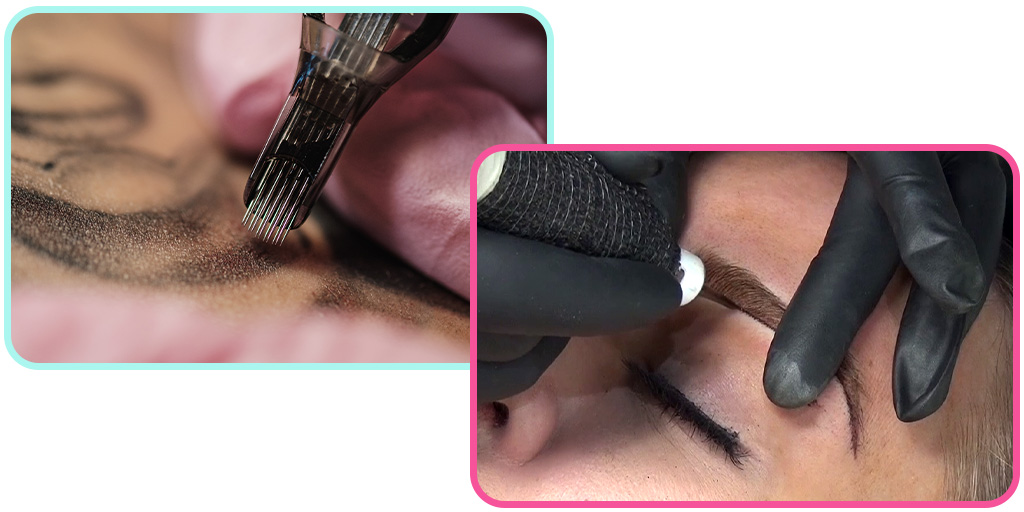
This is why it is crucial to educate yourself on what is in the inks and pigments you are using – to fully understand how these will look within the skin in 3-5 years’ time! Once you understand the different colourants, this will provide further evidence for why tattoo ink is not appropriate for PMU.
